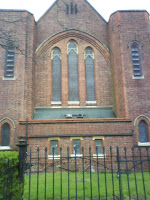The word vertigo is defined by the Britannica encyclopedia as a 'motion in which the individual or the individual surroundings seem to whirl dizzy.'
This film was directed by Alfred Hitchcocks.
He was the first person to introduce a reverse zoom shot - background comes towards us, then foreground goes down. He achieved this shot by tracking away from the shot of the object while zooming towards the object. Combining these two shots - the zoom in and track out created this effect. It visually makes the audience feel as dizzy as the protagonist.
The film is about a retired detective called Scottie, who is hired to follow his college friend's wife, for her peculiar behaviour. Madeline - his friends wife tries to commit suicide. Scottie manages to save her and they fall in love. She tells him about her bad dreams. He tells her to confront the dreams, so they both go to the location - the church . Suddenly she runs up the stairs, Scottie fails to chase her up the bell tower as he has acrophobia and hears a scream. Madeline commits suicide, later he bumps into a women who looks exactly like Madeline and he find out the who Madeline really is.
Analysis of Vertigo opening titles
The camera fade from black, to a close up of a women lips, the camera tilts up to the nose and eyes. There is an extreme close up shot, of the eye. The image goes red. There is a graphic match of coloured spiral circles. The spirals increase in size, then decreases and fades back into the eye. The spiral image shows the psychological state of Scottie. The music is suspenseful, it is fast, a deep loud sound is repeatedly occurring and adds to the idea of suspense. The music builds up (gets louder and louder) and changes. The new music is the same pace but has different instruments playing in it. the deep sound repeats. At the end, the music is the same as the beginning.












